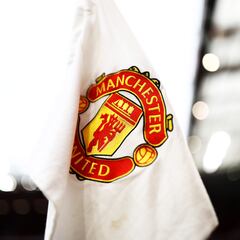How many foreign players can play in a LaLiga team?
There are currently 41 non-EU or ‘foreign’ players registered to play in Spain’s top division. There are limits as to how many each club can have.

There has never been a time when Spanish football has not included players who were born in other countries. Many of the game’s greatest players were based at Spanish clubs even though technically, they were foreign nationals - Alfredo Di Stéfano, Puskás, Kubala, Kopa, Héctor Rial and more recently, Johan Cruyff, Mágico González, Hugo Sánchez, Cristiano Ronaldo and Leo Messi.
Non-Spanish players have featured in Spain’s top flight since the first edition of the competition in 1929 - although under certain restrictions, conditions which have changed and continue to change up until today. Initially, players who were not born in Spain could only play as amateurs, not professionals and occasionally, only in friendly matches. There was an influx of foreign players from south and central America during the early 1930s but it wasn’t until the 1934-35 season that they could be registered as professionals with Spanish clubs.

At first, Spanish clubs were allowed just one foreign player but there was a way around that. Laszlo Kubala, born in Hungary, was the first overseas player to be nationalised, becoming a Spanish citizen in 1953, which meant he could free up a place for another foreign player and be eligible to play for Spain.
The limit regarding the allocation of non-Spanish players changed again after Johan Cruyff joined Barcelona in 1973. From the following year, LaLiga clubs were allowed a maximum two foreign players - a change in the regulations which opened the doors to some of the top players in Europe at the time - Netzer, Pereira, Neeskens, Breitner, Krankl… In 1990, the quota rose to three, and in 1995, the Bosman Ruling heralded a revolution for non-EU citizens.

The Bosman Ruling effectively abolished nationality quotas for clubs within the EU-European Economic Area. Also, with the signing of the Cotonou Agreement in 2000, the number of players that were able to comply was expanded significantly. Under that agreement, players from Africa, the Caribbean and Pacific Group of States could now apply to be naturalised in their host country.
Brexit also impacted British players’ status in much of mainland Europe. Following the UK’s exit from the single market and customs union, players with British nationality who are registered from 1 January 2021 onwards will be considered, for the purpose of registration, within the maximum permitted quota and with the possibility of being included in the starting line-up, as “non-EU players”.
Related stories
- Highest paid soccer stars in the world
- How many LaLiga teams are from Madrid this season 2022/23?
- What are the oldest stadiums in the Premier League?
How many non-EU players are allowed at each LaLiga club?
Today, the majority of players registered to play in LaLiga are either Spanish-born, or from countries belonging to the European Union. Currently, each club can register a maximum of three players who do not possess a European Union passport. For example, Real Madrid have the maximum quota with Vinicius, Rodrygo and Militão - although Vini is still is the process of gaining dual nationality.
Related stories
Of the 495 players currently registered to play in LaLiga, 210 were not born in Spain and of those, 41 occupy non-EU status.
⚪️ @vinijr
— Real Madrid C.F. 🇬🇧🇺🇸 (@realmadriden) September 17, 2022
🟠 @alvaroodriozola
💪 #RMCity pic.twitter.com/dRwN0Le4O5
What does it mean for a footballer to be from outside the EU?
EU Community players are those who were born in countries which belong to the EU - or have managed to obtain dual nationality. If a player is considered non-EU, he was born in a country that does not belong to the European Union, and, therefore, his passport is not linked to any of the nations that form part of this community. There have been cases when a footballer from another continent, in addition to being able to sign for a specific team, wants to change teams due to lack of opportunities, one recent example of that was Diego Costa, who was stripped of his Brazilian citizenship so that he could play for Spain.

